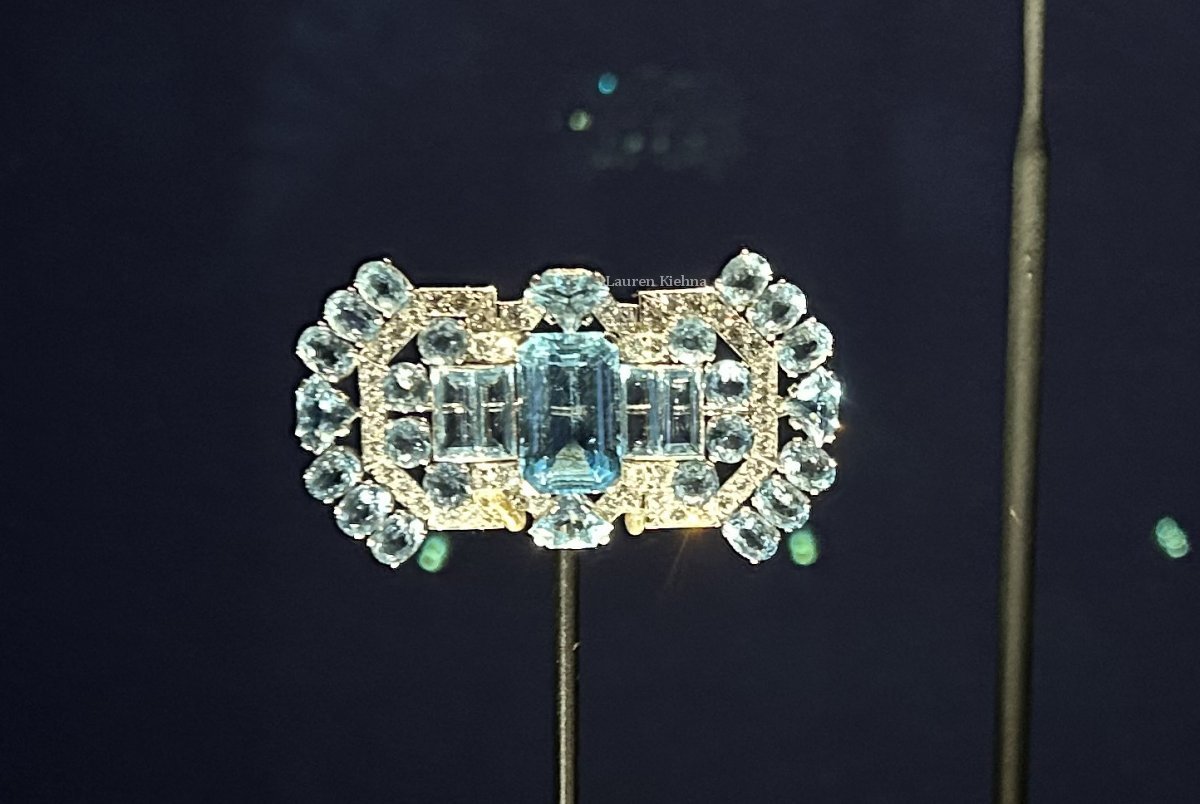
This week, the British royal family will join people across Europe in celebrating the 80th anniversary of VE Day, the end of World War II in Europe in May 1945. A hidden piece of VE Day history is currently sparkling in another corner of London, ready to be discovered by those visiting the Cartier exhibition at the V&A.

On May 8, 1945, the people of the United Kingdom were finally able to relax for the first time in nearly six years. Germany agreed to an unconditional surrender, ending the war that had begun in the summer of 1939. Though war continued with Japan in the Pacific, the war in Europe had officially come to an end. Churchill announced that hostilities in Europe would cease at midnight, and King George VI delivered a radio address at 9 PM, beginning, “Today we give thanks to God for a great deliverance. Speaking from our Empire’s oldest capital city, war-battered but never for one moment daunted or dismayed—speaking from London, I ask you to join with me in that act of thanksgiving.”
“LONDON GOES WILD IN MADDEST NIGHT,” the headline in the Sun the next morning trumpeted. The city that had endured the Blitz was triumphant. The biggest public crowds since the 1937 coronation thronged the streets, jamming the Mall and Trafalgar Square. When the King’s speech had ended, the crowds outside the palace burst into the National Anthem and then chanted, “We want the King!” A few minutes later, the royal family obliged them, with the King and Queen stepping on to the palace balcony with their daughters, Princess Elizabeth and Princess Margaret.
While Elizabeth and Margaret were famously permitted to slip into the crowd for a few hours of unrestrained jubilation, King George and Queen Elizabeth continued to respond to the people’s calls for more appearances, stepping on to the balcony eight different times. They made their last appearance of the night at 3 AM, just before the palace floodlights were finally switched off.
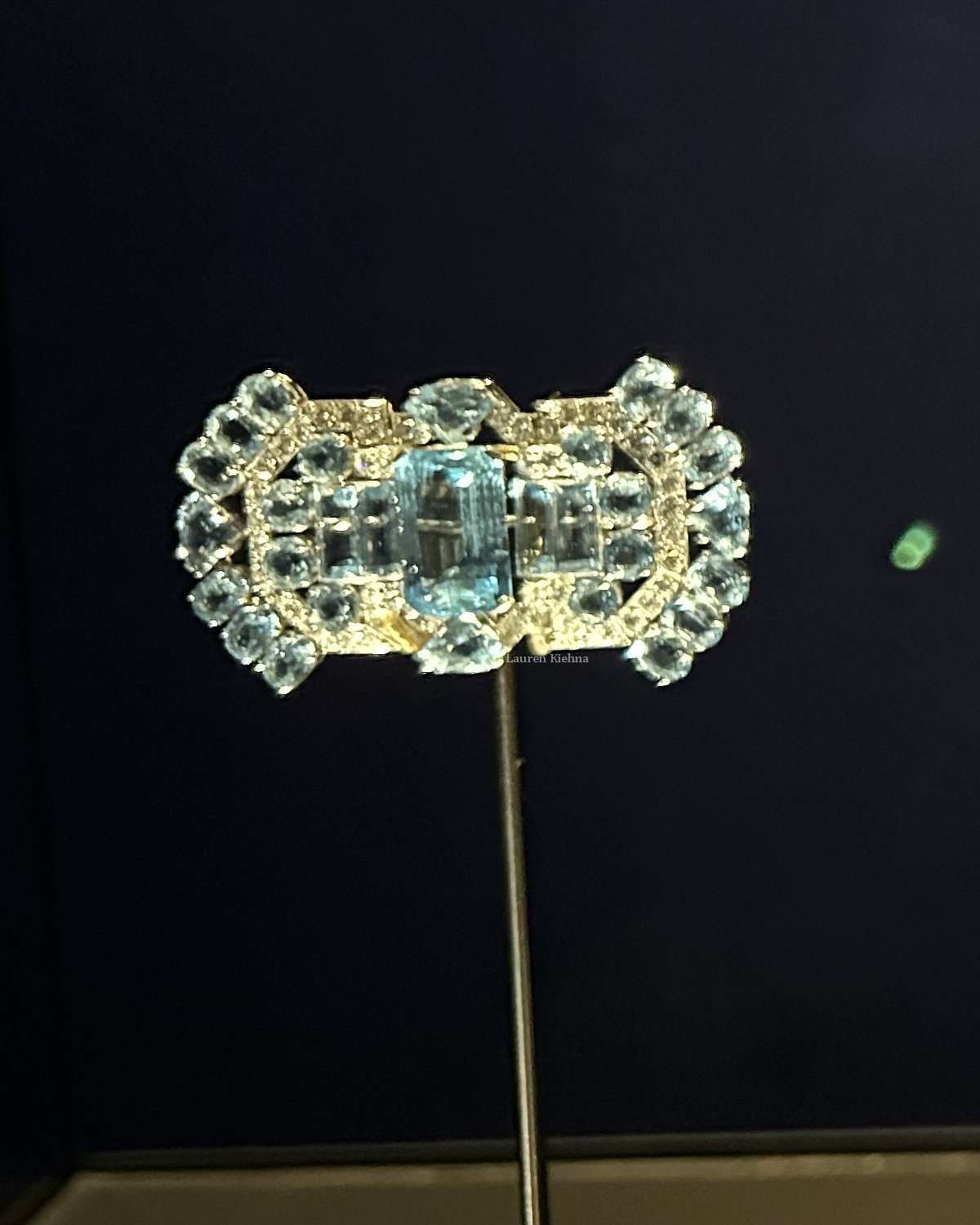
As the Queen stepped out into the bright lights illuminating the palace, a special brooch was sparkling on her jacket. The jewel, made of platinum and set with aquamarines and diamonds, was one of the many gifts acquired by her husband from Cartier in London. Bertie, then Duke of York, bought the brooch for Elizabeth in 1935, in the last year of his father’s reign, before the tumult that catapulted them on to the throne in December 1936. The brooch’s design is typical of those produced by the firm in the 1930s, with Art Deco inspiration visible in its geometric lines and varied gemstone cuts.
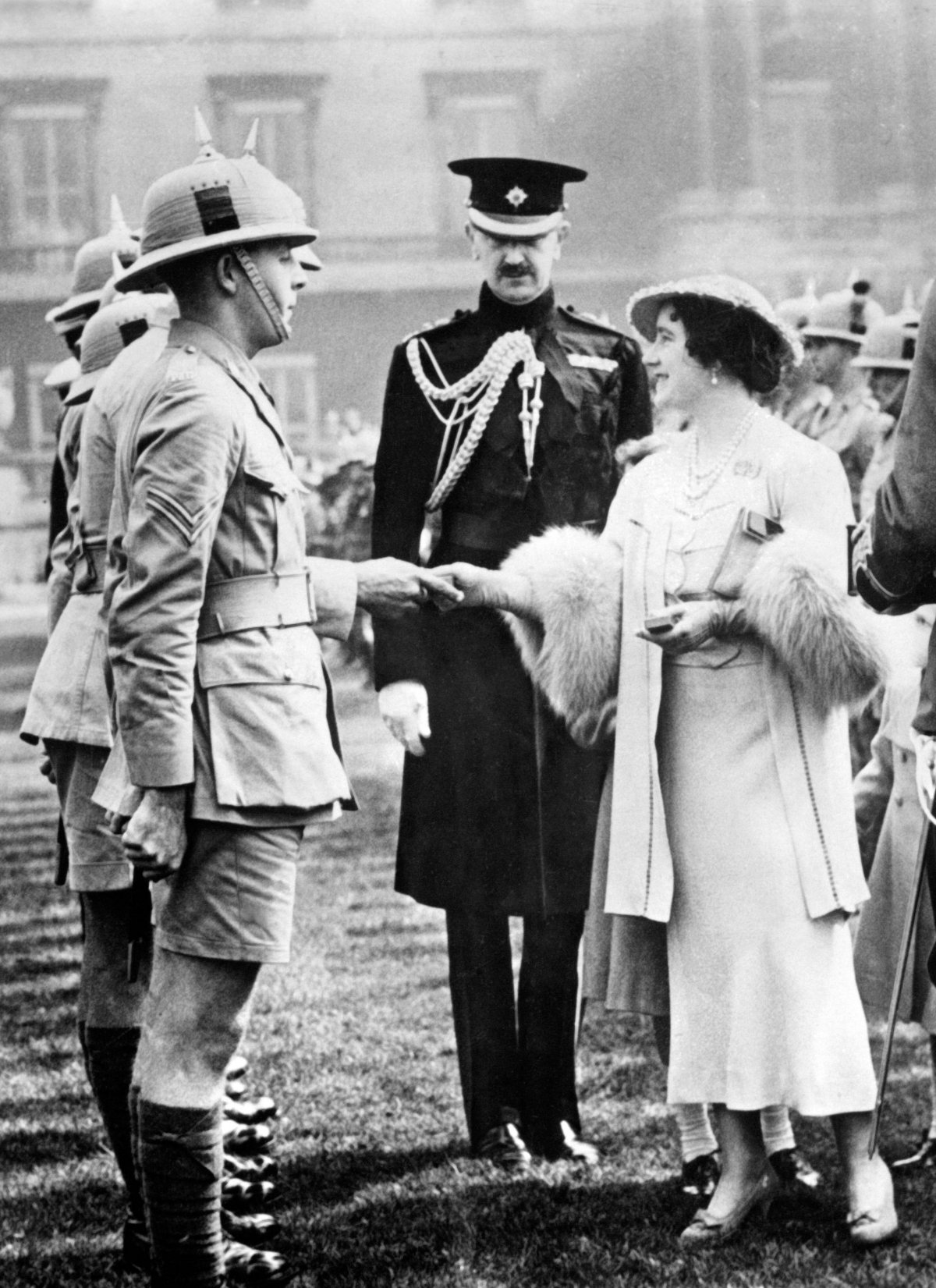
Elizabeth wasted no time in incorporating the aquamarine brooch into her jewelry wardrobe, and she wore it especially often in the first years of her husband’s reign. Here, the brooch is visible on her jacket as she hands out coronation medals at Buckingham Palace on May 14, 1937, to officers and soldiers who had participated in the celebrations two days earlier.
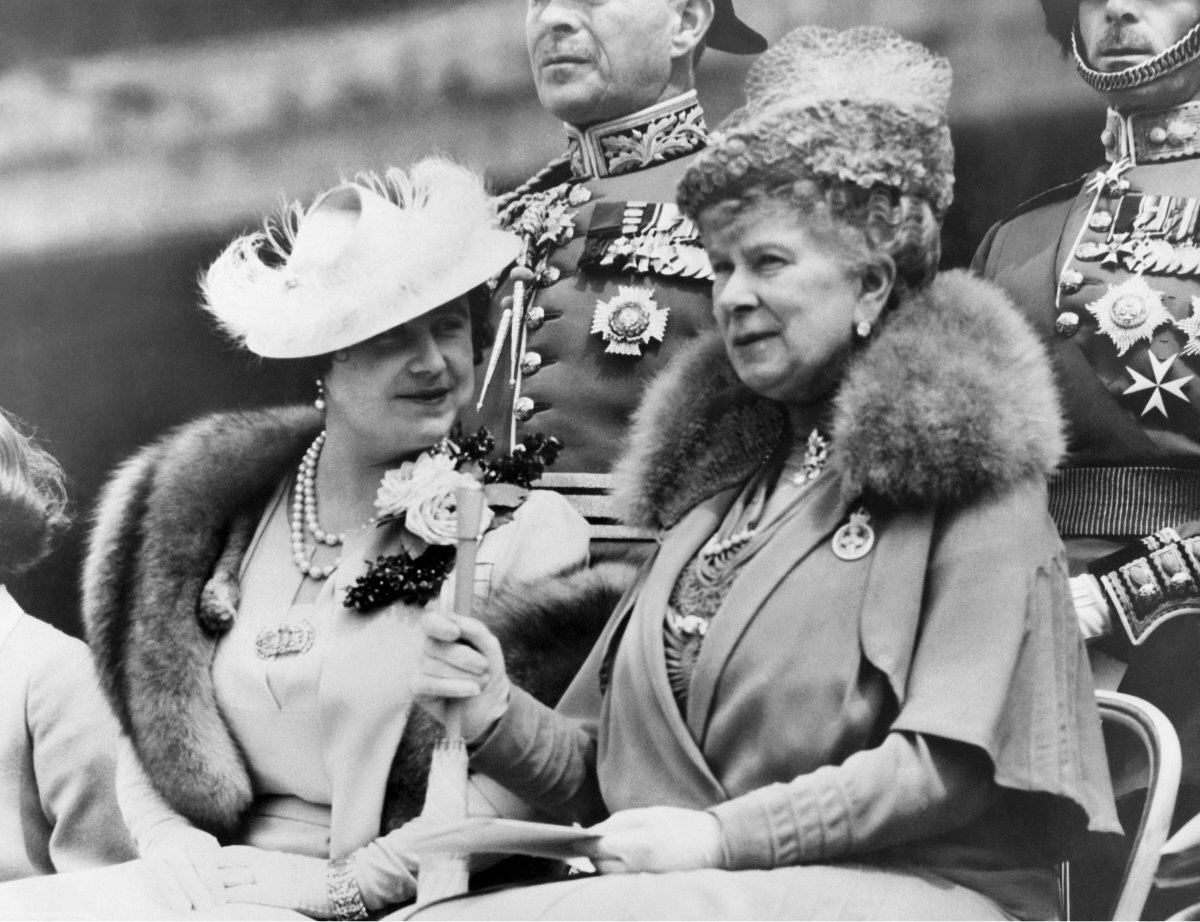
And here, the brooch is pinned at the center of Elizabeth’s bodice as she and Queen Mary watch King George VI presenting new colours to the Grenadier Guards at the palace a year later in May 1938.
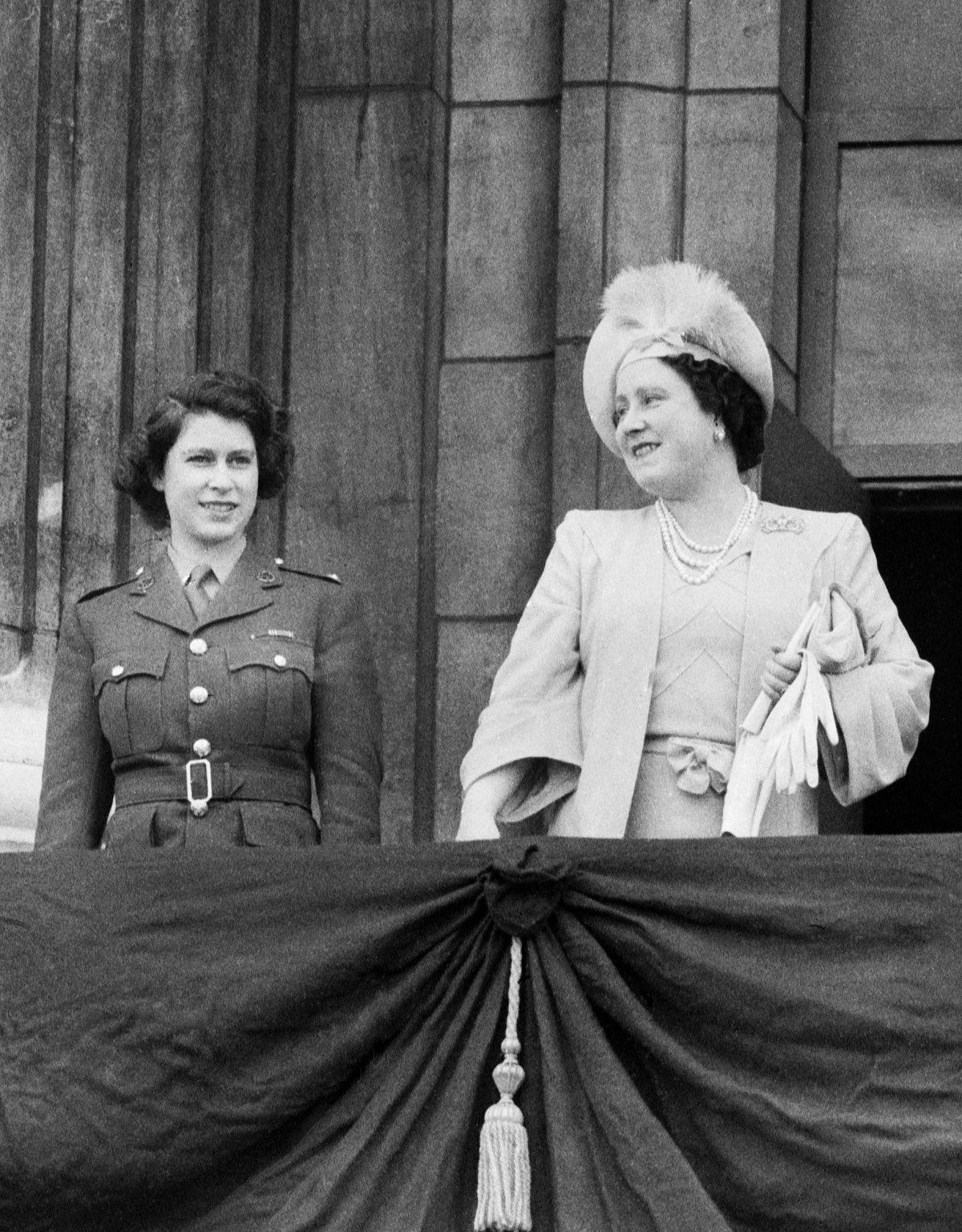
Elizabeth continued to wear the brooch on various occasions through the war years that followed. When the great news of victory in Europe arrived on May 8, 1945, she pinned the brooch to her jacket to celebrate the moment with the people of London. It would have twinkled beautifully in the electric lights that shined on the palace that night.
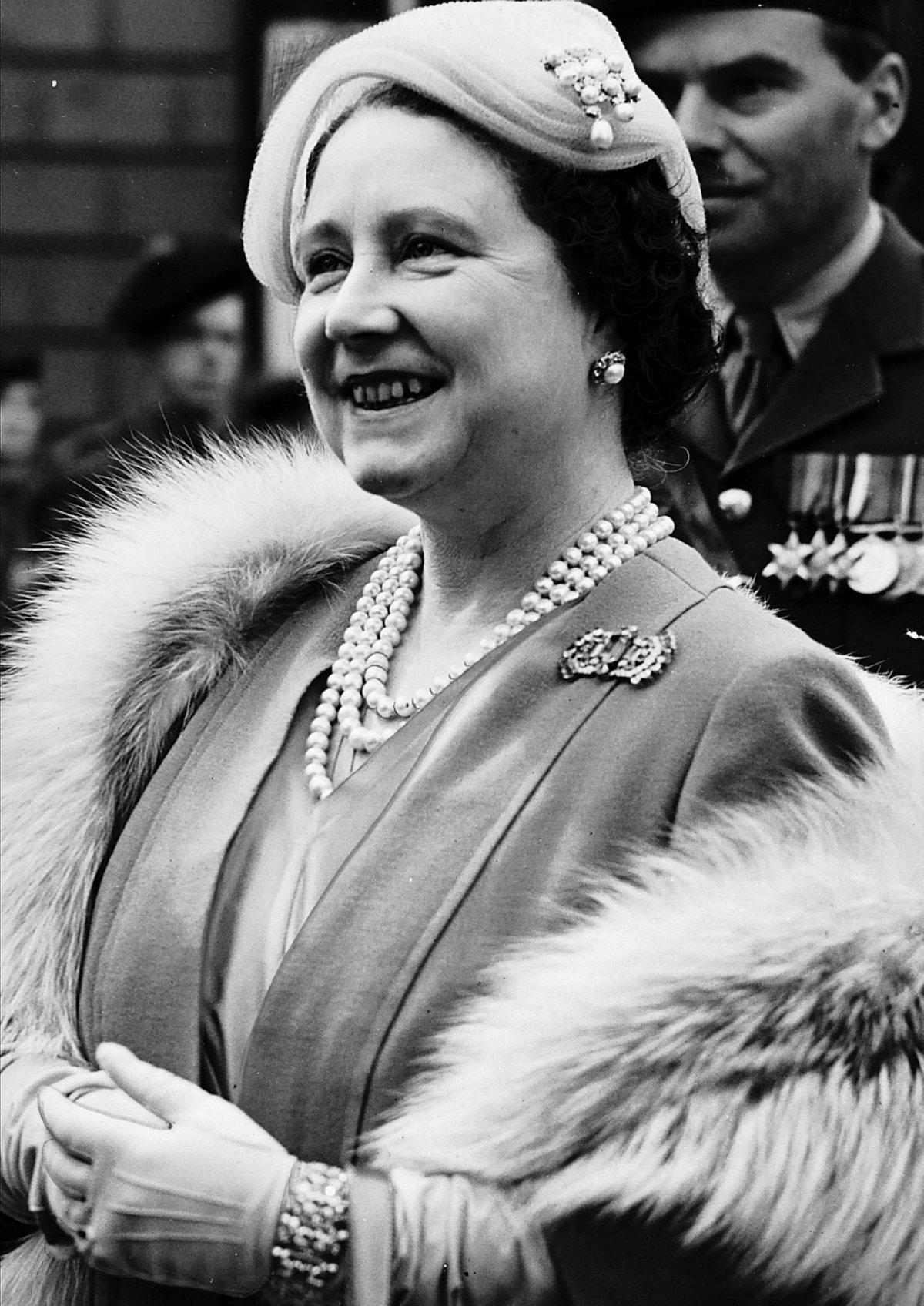
After King George VI’s death in 1952, the Queen Mother continued to wear the brooch occasionally. Here, she wears it on her jacket during a visit to Forfar. (Another royal jewel, Queen Victoria’s Pearl and Diamond Brooch, is pinned to her hat.) But as she got older, Elizabeth grew to prefer the ornate nineteenth-century brooches in her collection, especially those with chain and pendant sections. Art Deco pieces like the Cartier aquamarine brooch were relegated to the back of her jewelry collection.
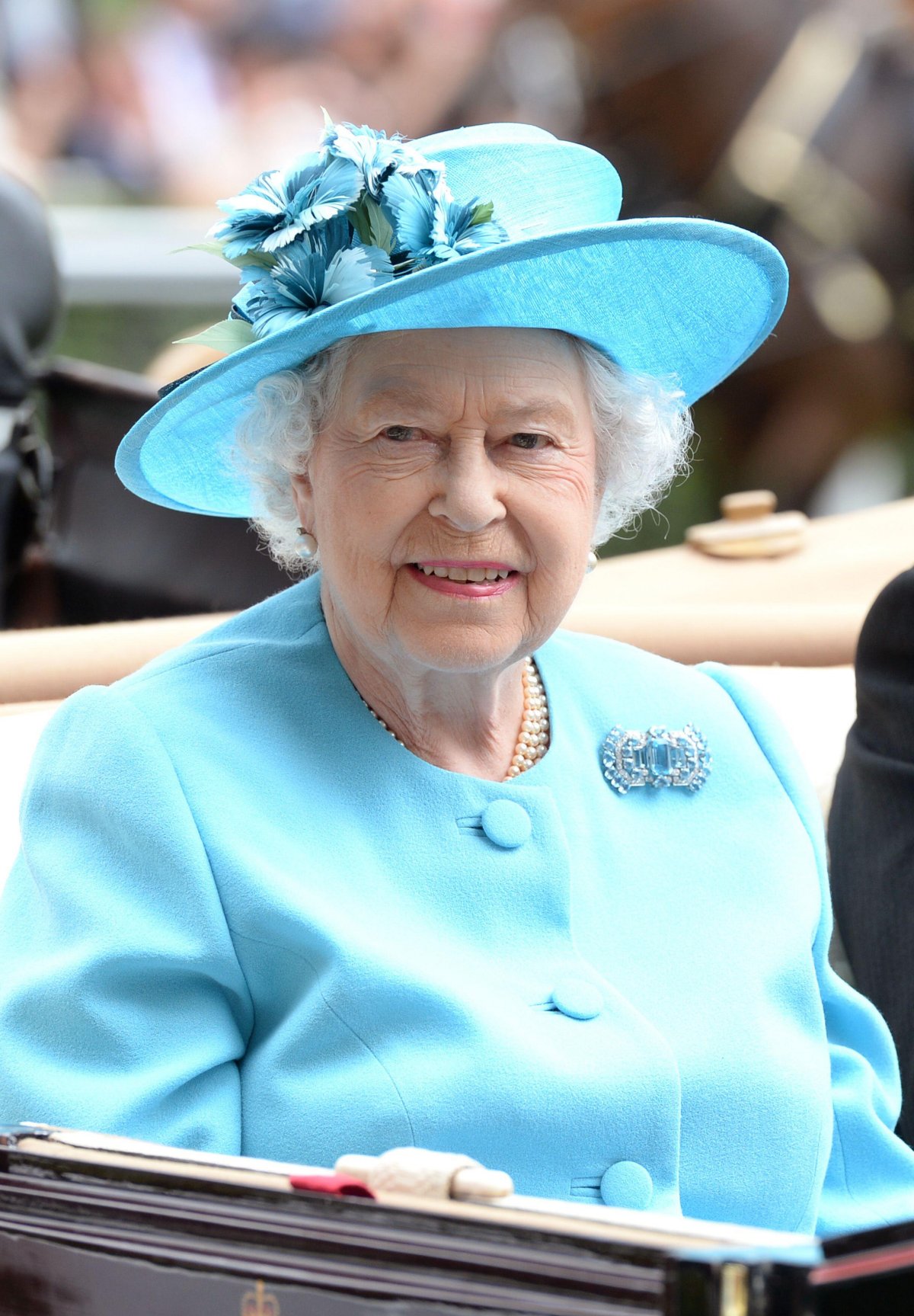
When the Queen Mum passed away in 2002, the Cartier brooch was one of the many jewelry pieces bequeathed to her elder daughter, Queen Elizabeth II. She took her time in debuting the brooch. Twelve years after her mother’s death, Elizabeth II made her first public appearance in the jewel, wearing it on Ladies’ Day at Royal Ascot in 2014.
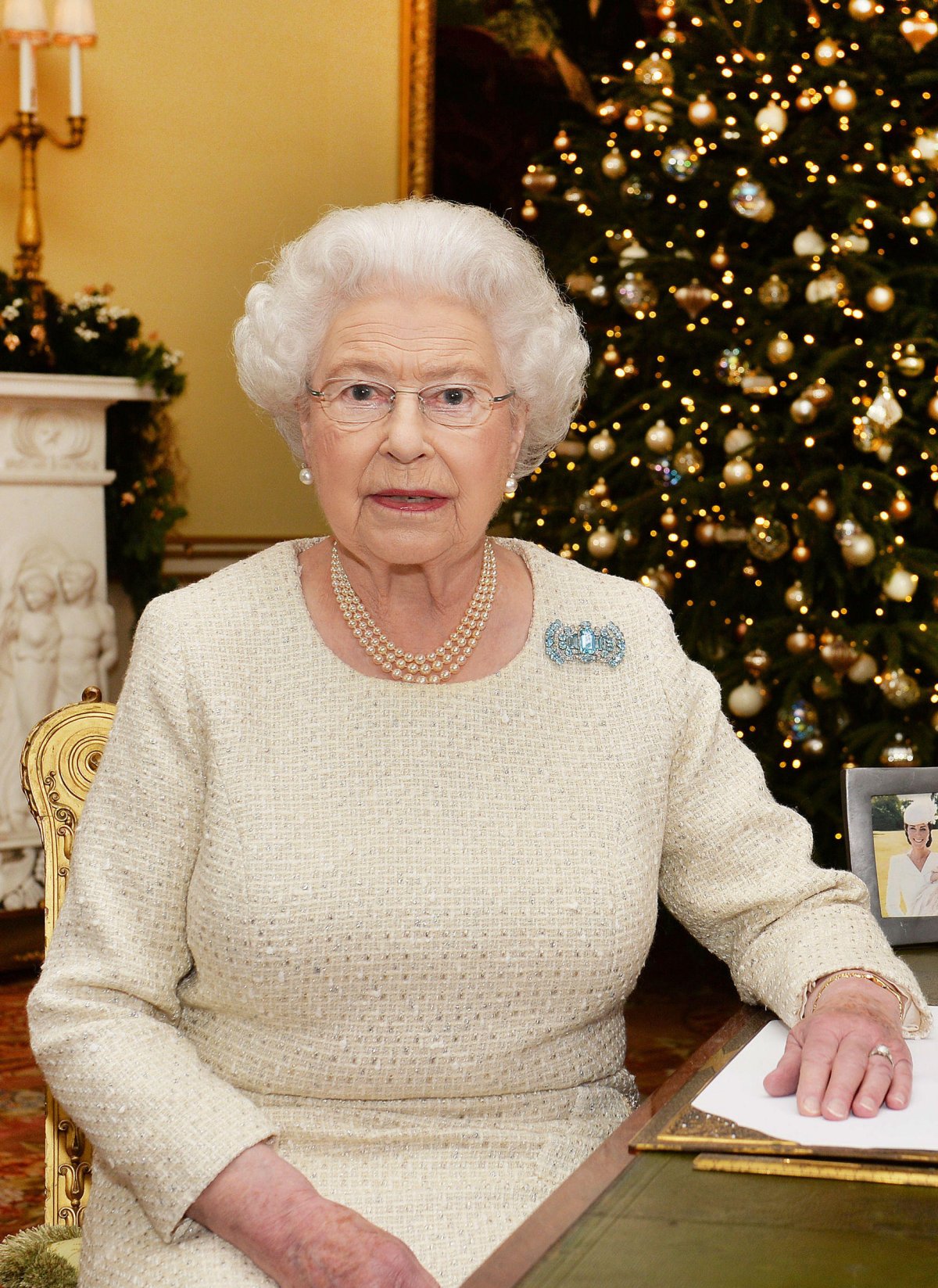
For the next eight years, Queen Elizabeth II wore the brooch on various occasions. One of her most memorable appearances in the diamond and aquamarine jewel came at Christmas in 2015, when she wore the brooch for her annual address to the nation and the Commonwealth.
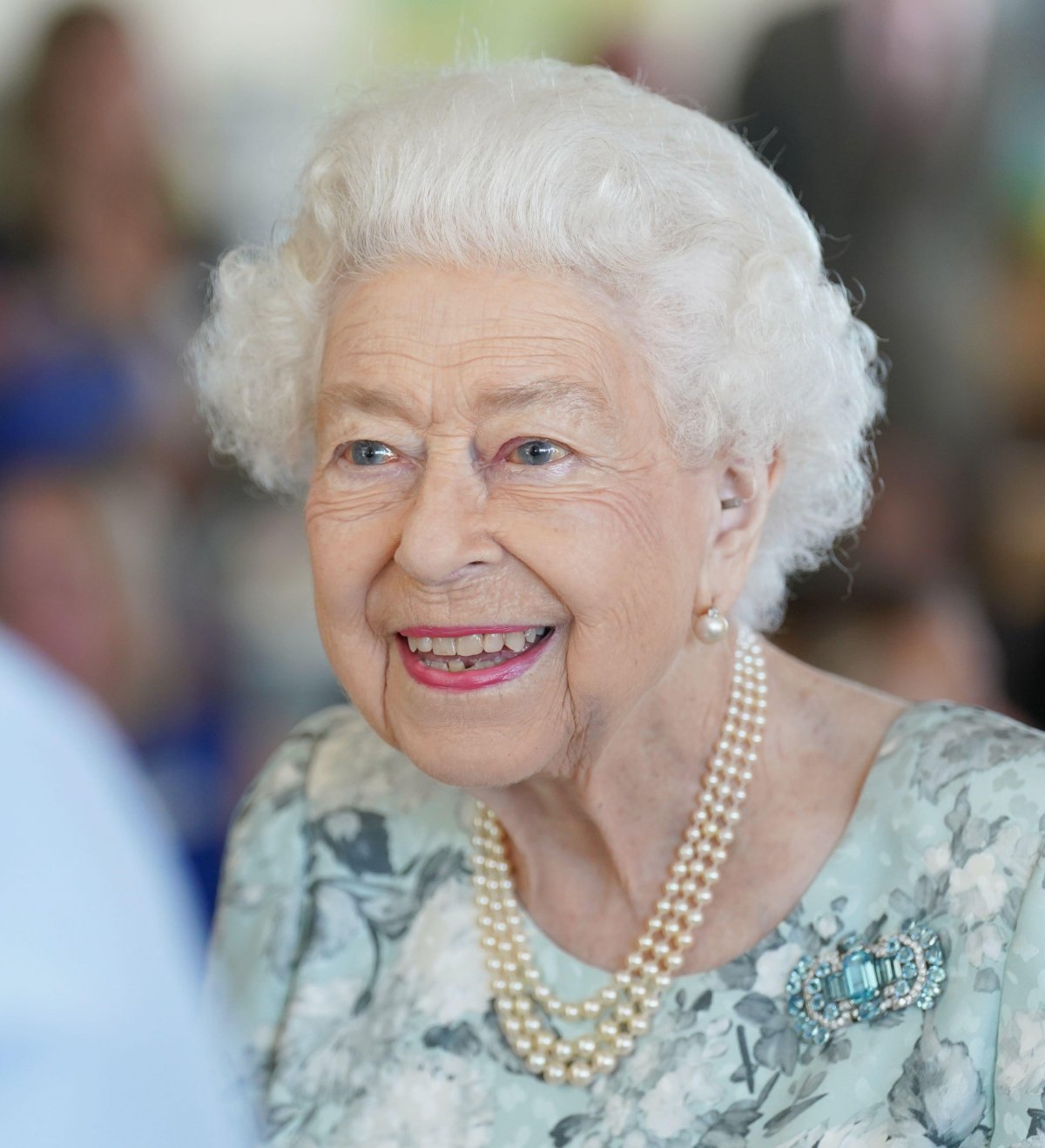
Poignantly, the brooch was also the last one that Elizabeth II wore in public. When she made a surprise visit to open the new Thames Hospice in Berkshire on July 15, 2022, the aquamarine brooch was pinned to her blue floral dress.
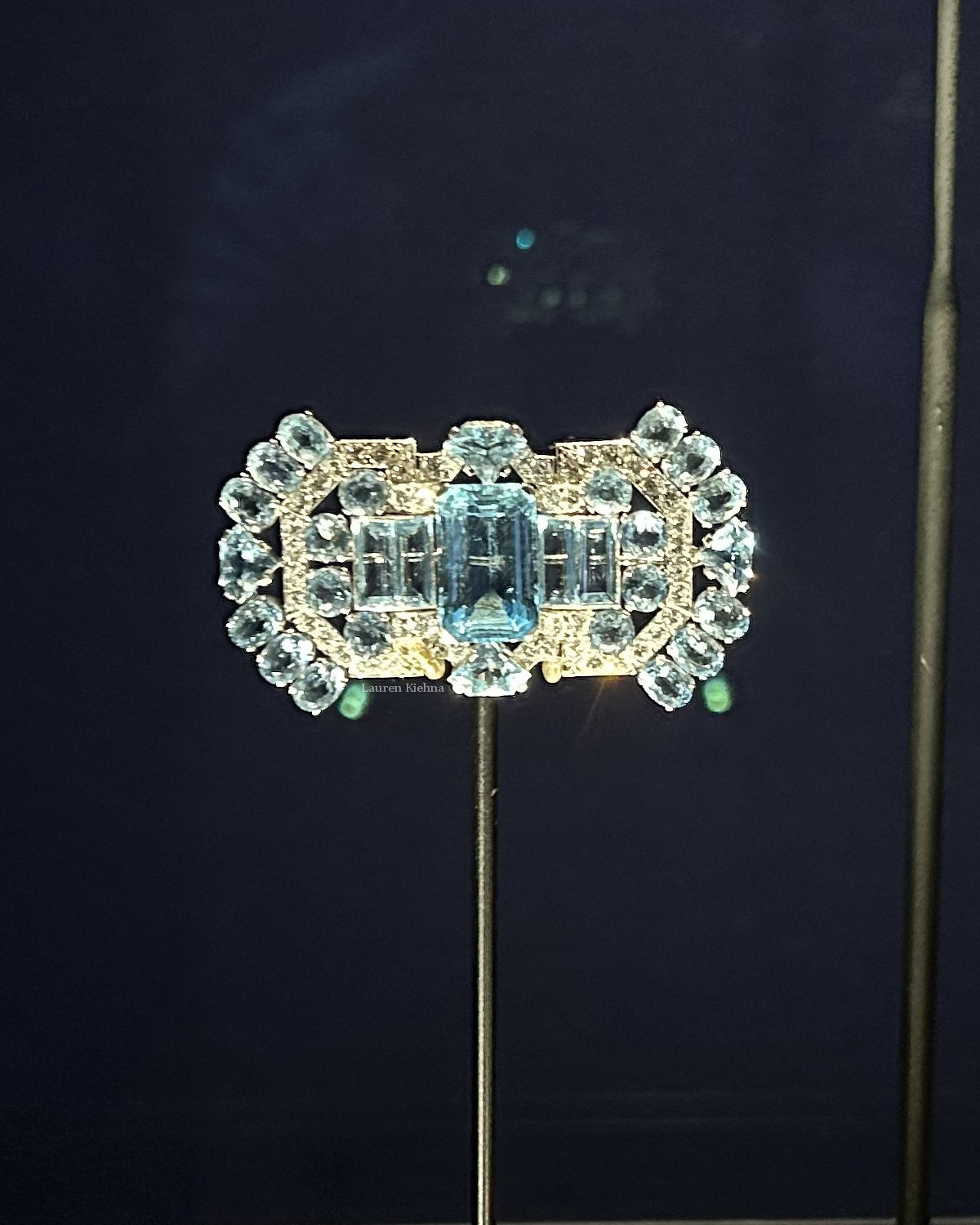
Now, the brooch belongs to her eldest son, King Charles III. He has kindly loaned the jewel to the new Cartier exhibition at the Victoria & Albert Museum, which runs from now through November. Those who visit the exhibition this week, as the VE anniversary take place in London, can see a little bit of history from that jubilant moment sparkling in person.
Leave a Reply
You must be logged in to post a comment.